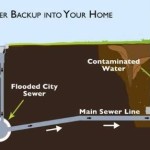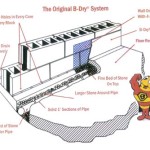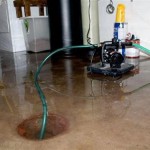How Do Basement Drains Work?
Basement drains are an essential part of any home's drainage system. They help to prevent flooding and water damage by collecting and removing water from the basement. There are two main types of basement drains: sump pumps and floor drains.
Sump Pumps
Sump pumps are the most common type of basement drain. They are installed in a sump basin, which is a hole in the floor of the basement that collects water. When the water level in the basin rises, the sump pump turns on and pumps the water out of the basement. Sump pumps are typically powered by electricity, but there are also battery-powered sump pumps available.
Floor Drains
Floor drains are another type of basement drain. They are installed in the floor of the basement and are connected to a drainpipe that leads to the sewer. Floor drains are designed to collect water from the floor and drain it away. Floor drains are typically used in areas of the basement that are prone to flooding, such as laundry rooms and bathrooms.
How to Install a Basement Drain
Installing a basement drain is a relatively simple process that can be completed in a few hours. The first step is to choose the type of drain that you want to install. Once you have chosen a drain, you will need to gather the necessary materials and tools.
To install a sump pump, you will need the following materials and tools:
- Sump pump
- Sump basin
- Gravel
- PVC pipe
- Pipe fittings
- Electrical wire
- Electrical connectors
- Screwdriver
- Wrench
To install a floor drain, you will need the following materials and tools:
- Floor drain
- Drainpipe
- PVC cement
- Screwdriver
- Wrench
Once you have gathered the necessary materials and tools, you can follow these steps to install your basement drain:
- Choose a location for your basement drain. The drain should be located in an area of the basement that is prone to flooding.
- Dig a hole for the drain. The hole should be large enough to accommodate the drain and the gravel.
- Place the drain in the hole and fill the hole with gravel.
- Connect the drain to the drainpipe.
- Test the drain to make sure that it is working properly.
Maintenance Tips for Basement Drains
Basement drains require regular maintenance to ensure that they are working properly. Here are some tips for maintaining your basement drains:
- Check the sump pump regularly to make sure that it is working properly.
- Clean the sump basin regularly to prevent it from becoming clogged.
- Inspect the floor drains regularly to make sure that they are not clogged.
- Have your basement drains inspected by a professional plumber once a year.
By following these tips, you can help to keep your basement drains working properly and prevent flooding and water damage.

Basement Waterproofing How To Install A Water Drainage System Diy

How Does Basement Drainage Work

How Does Basement Drainage Work

Footing Drain Interior French Pros And Cons Sani Tred

How Does Basement Drainage Work

Basement Drain Systems The Secret To A Dry

Basement Drains 101 A Simple Guide For Busy Homeowners

What Is A Sump Pump How Do They Work Learn More

Basement Drainage System Interior And Exterior Waterproofing Free Estimates

Basement Waterproofing How To Install A Water Drainage System Diy
Related Posts







